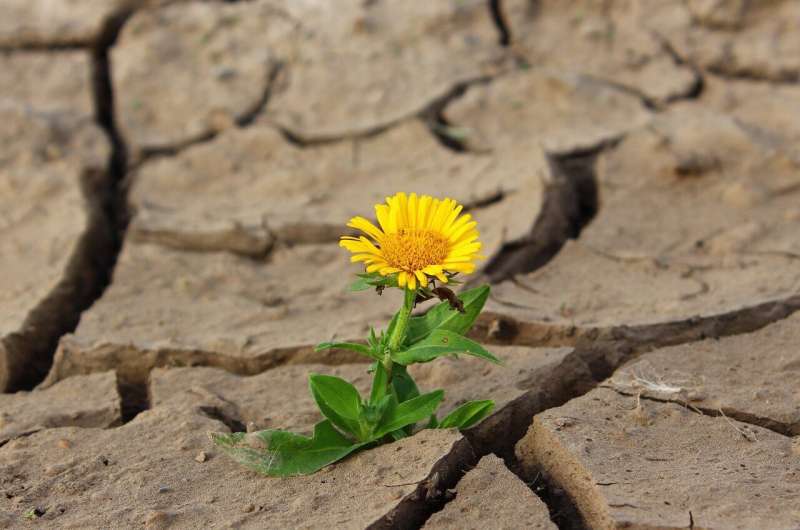Study links historical housing disparities with dangerous climate impacts

Extreme heat kills more people in the United States than any other type of hazardous weather and will likely become even deadlier due to climate change. However, extreme heat does not affect all people equally. Surface temperatures in different neighborhoods within a single city can vary by a whopping 20 degrees (F), making some people more at risk of experiencing dangerous temperatures.
A new study by researchers at the Science Museum of Virginia and Portland State University, with assistance from a student at Virginia Commonwealth University, is one of the first to link historical housing policies across the United States to inequitable heat exposure.
"We found that those urban neighborhoods that were denied municipal services and support for home ownership during the mid-20th century now contain the hottest areas in almost every one of the 108 cities we studied," said Vivek Shandas, professor of urban studies and planning at Portland State University. "Our concern is that this systemic pattern suggests a woefully negligent planning system that hyper-privileged richer and whiter communities. As climate change brings hotter, more frequent and longer heat waves, the same historically underserved neighborhoods—often where lower-income households and communities of color still live—will, as a result, face the greatest impact."
Jeremy Hoffman of the Science Museum of Virginia, and Nicholas Pendleton, a former student at Virginia Commonwealth University, also contributed to the study, which was published in the journal Climate on Monday, January 13th. The researchers examined the relationship between summertime surface temperatures, which were derived from satellite imagery, and historical housing policies, specifically 'redlining,' in 108 cities in the United States.
Neighborhoods with less green space and more concrete and pavement are hotter on average, creating 'heat islands.' In an earlier study of Portland, Oregon, Shandas and colleagues found that lower-income households and communities of color tend to live in heat islands. They found similar effects in other cities, and they wanted to know why.
To explore this question, they looked at the relationship between 'redlining' and surface heat. Beginning in the 1930s, discriminatory housing policies categorized some neighborhoods—designated with red lines—as too hazardous for investment. Thus, residents in 'redlined' neighborhoods were denied home loans and insurance. These areas continue to be predominantly home to lower-income communities and communities of color. While the practice of redlining was banned in 1968, this study aimed to assess the legacy effects of such policies within the context of rising temperatures.
The study found formerly redlined neighborhoods are hotter than all other neighborhoods in 94% of the 108 cities studied. In particular, the researchers found that redlined neighborhoods across the country are about 5 degrees Fahrenheit warmer, on average, than non-redlined neighborhoods. However, in some cities the differences are much more stark. For example, the cities of Portland, OR, Denver, CO and Minneapolis, MN showed the largest heat differences between redlined and non-redlined areas—as much as 12.6 degrees Fahrenheit.
"The patterns of the lowest temperatures in specific neighborhoods of a city do not occur because of circumstance or coincidence. They are a result of decades of intentional investment in parks, green spaces, trees, transportation and housing policies that provided 'cooling services,' which also coincide with being wealthier and whiter across the country," said Shandas. "We are now seeing how those policies are literally killing those most vulnerable to acute heat."
"I think anyone living in these neighborhoods today will tell you that it's hot during a heat wave," said Hoffman. "But that's not really the point. They are not only experiencing hotter heat waves with their associated health risks but also potentially suffering from higher energy bills, limited access to green spaces that alleviate stress and limited economic mobility at the same time. Our study is just the first step in identifying a roadmap toward equitable climate resilience by addressing these systemic patterns in our cities."
There are ways to mitigate the effects of extreme heat on potentially vulnerable populations through urban planning, and the researchers want this study to lead to changes in the way we design our cities and neighborhoods.
"Having worked with dozens of cities to support the creation of heat mitigation plans, we want to recognize that all neighborhoods are not made equal," Shandas said. "Nevertheless, by recognizing and centering the historical blunders of the planning profession over the past century, such as the exclusionary housing policies of 'redlining,' we stand a better chance for reducing the public health and infrastructure impacts from a warming planet."
More information: Jeremy S. Hoffman et al, The Effects of Historical Housing Policies on Resident Exposure to Intra-Urban Heat: A Study of 108 US Urban Areas, Climate (2020). DOI: 10.3390/cli8010012
Provided by Portland State University




















